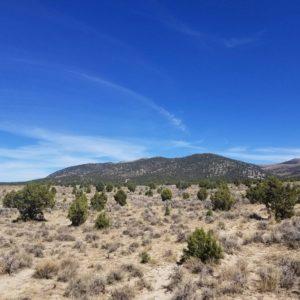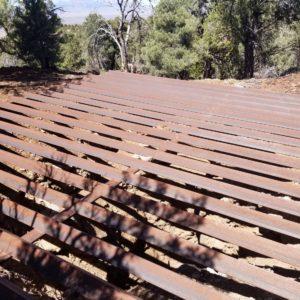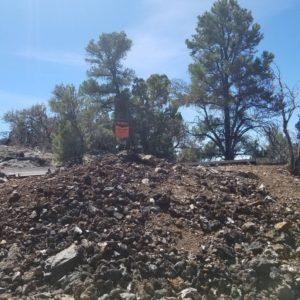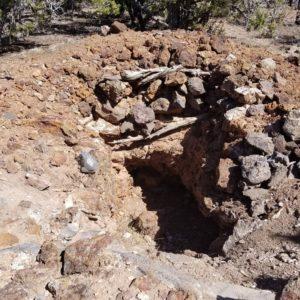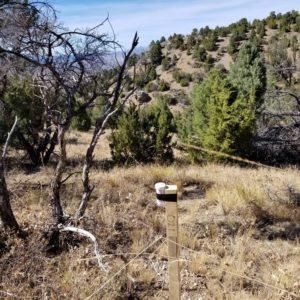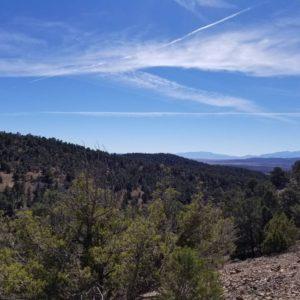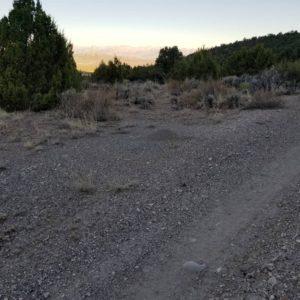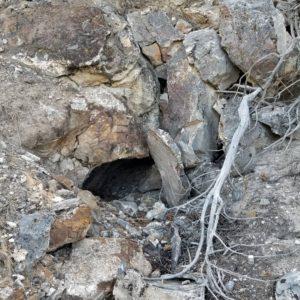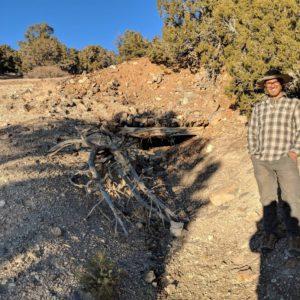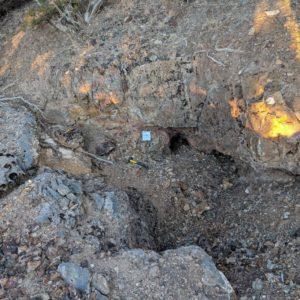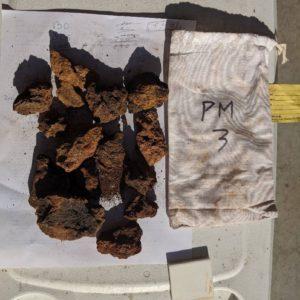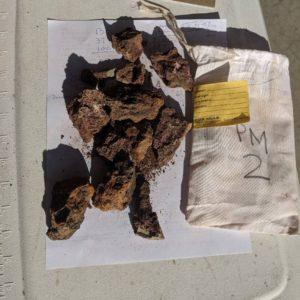Location: Elko County, Nevada
Size: 394 acres
Type: Lode
The Paramount claims consist of 20 unpatented lode mining claims, covering 398.8 acres, on federal land managed by the U.S. Bureau of Land Management. The Paramount Mine was a high-grade silver, gold, lead, and zinc mine that was active from the 1870’s to 1940’s. The Old Paramount Mine reported grades of 15 ounces silver per ton, .25 ounces gold per ton, and 40% lead. In the 1980’s, Santa Fe Gold drilled the property and discovered gold in favorable rocks at about 300 feet depth. More recently, Renaissance Gold and Sumitomo Corp. conducted a multi-year exploration program with additional drilling, geophysics, and geochemical programs. Most of exploration focus of Renaissance / Sumitomo was on the Sprucemont area to the southeast and the South Target area to the south. Renaissance and Sumitomo dropped the property in 2014 during the downturn in the gold exploration industry. Renaissance and its predecessor company, AuEx Ventures were responsible for the Long Canyon gold discovery (2.2 mill oz) in the nearby Pequop District.
The Paramount claims have several mine shafts and adits. Exposed veins were sampled in November 2019 and returned bonanza silver, lead and zinc numbers (2.55 opt Ag, 6.30% Pb, 1.78% Zn, 0.14 ppm Au). Drilling by Santa Fe Gold during the 1984-85 season discovered a flat lying gold prospect that established the potential for a large Carlin-style system. Renaissance followed-up this drilling from 2011 to 2013. Additional gold bearing intercepts were obtained and the Carlin-style mineralization was confirmed to exist over approximately a 1,000 meter strike.
Renaissance commissioned an extensive geological report in 2011 that was compliant with Canadian NI 43-101. In 2013, a Master’s Thesis was completed on the Spruce Mountain property establishing the age and geochemistry of the intrusive rocks of the district. Both of these report are available for review. There are a
Mining and Exploration Potential: Paramount is an advanced exploration property with several promising drill intercepts and the potential for a Carlin-style gold discovery. The Spruce Mountain area has seen millions of dollars in exploration and study by some of the best mining companies in the world. The understanding gained from these efforts have set the stage for a discovery by a new entrant for a fraction of the cost it might otherwise take. While most of the historical exploration has focused on the molybdenum porphyry and gold skarn targets outside the claim area, there are excellent prospects for a Carlin-style discovery in the foothills region to the west of the Spruce Mountain range (on our claims).
Our clams cover the heart of the Carlin-style gold prospect and most of the gold-bearing intercepts in the Pilot Shale. The property could be expanded on available BLM land.
Follow up drilling programs near the best intercepts and additional geophysical work would be the next exploration steps.
Some of the gold intercepts from the best drill holes: SM-03: 21 m of 2.36 g/t, SM-13: 6 m of 1.84 g/t, RSM-07: 15 m of 217 ppb.
The Spruce Mountain District is a famous silver-lead-zinc district in Elko Country, Nevada that has attracted the interest of major mining companies. There is the potential for both a molybdenum porphyry discovery, Carlin style gold deposits, gold skarn deposits, and additional silver-lead-zinc replacement deposits. Land in this district is usually claimed up, but during the recent downturn in exploration some choice parts of the district became available.
History: The first discovery in the Spruce Mountain district was rich silver-lead ore at the Killie Mine in 1869. From the 1869 to the 1930’s the district produced high grade silver-lead ore from various small mines. During the 1950’s to the 1970’s large companies took an interest in the district due to the discovery of molybedenum porphyry mineralization. Newmont, Freeport, AMAX, Occidental, Teck Resources, and others all conducted exploration and drilling activities. Santa Fe Gold drilled 33 reverse circulation holes during in 1984-85 season. Several of these holes had economic grades. AuEx Ventures staked the area in 2009 then quitclaimed the property to Renaissance in 2010. In 2011 a joint venture between Renaissance and Sumitomo Mining (through its Summit subsidiary) was signed. The JV conducted three rounds of drilling before dropping the property in 2014. Much of the drilling was outside the current claim area and focused on base metal deposits.
Geology: Spruce Mountain district lies on the eastern portion of the Great Basin. The Great Basin generally consists of NE trending ranges separated by valleys. Spruce Mountain is composed of Paleozoic carbonates and siliciclastic rocks intruded by volcanics (dikes and sills) of both Eocene and Jurassic age. Previous owners recognized Carlin-style mineralization and outcrops of the favorable host rock, the Pilot Shale. Drilling confirmed this with intercepts at the contact of the Pilot Shale and the Guilmette limestone formation. Kinross’ Alligator Ridge deposit has a similar geological setting. Detachment faulting is present along with high angle normal faults which served as conduits for metal emplacement. To the east of the claims there is a molybdenum porphyry target that has been extensively explored. The gold target first identified by Santa Fe is on our claims in the foothills region on the western edge of the district. To the south is a gold-skarn prospect in the Sprucemont area. Our claims are on the NE edge of an intrusive body identified by the aeromagnetic survey.
Access: The property is located about 225 miles from Salt Lake City, Utah, the nearest big city. Starting in Wells, Nevada at the intersection of Interstate 80 and Highway 93: travel south for about 36.1 miles, turn east onto an improved dirt road and travel southeast for about 7.1 miles until you reach an open area which can be used as a staging area. From this point you are about 2,000 feet south of the PM Claim block and access to the claims can be made by either ATV or a four-wheel drive vehicle.

